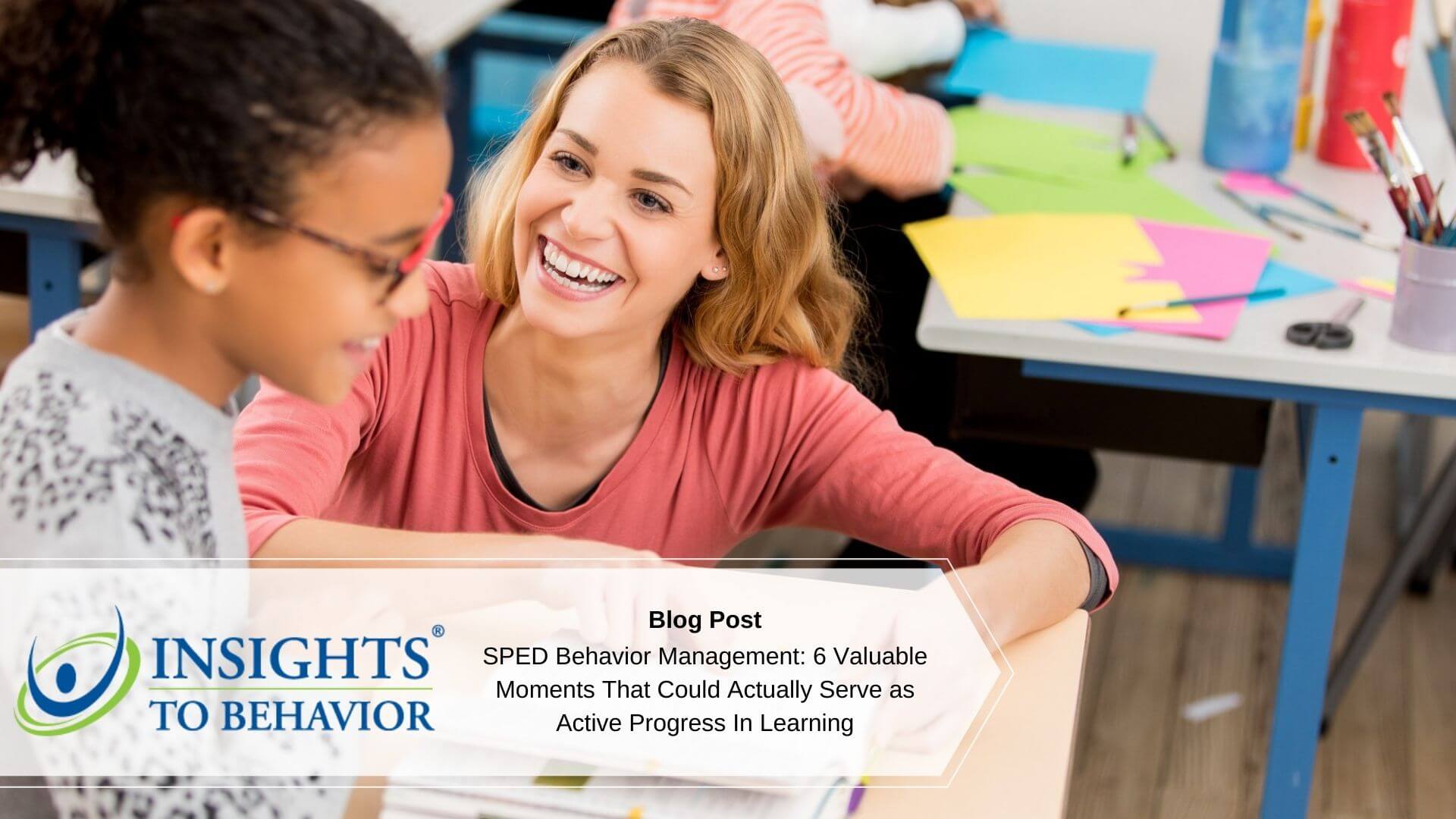As a special education professional, you know the importance of regularly evaluating and improving behavior management.
You use real-life experiences with your students to reassess your approach to SPED behavior management, but how do you know when it’s time to make a change?
Keep reading our guide for six behavior management moments in your special needs classroom that you can learn from to improve your practices. We’ll also provide you with resources to learn how to manage student behavior and intervene as needed. Let’s get started.
Moment One: When Classroom Rules Are Violated
One common behavior management issue that SPED teachers deal with is rule-breaking. It can happen at any moment in the classroom, from study times to lunchtime.
How do you learn from rule-breaking and change the behavior? The first thing you need to do is make sure you communicate the rules clearly and consistently. Many teachers outline class rules at the beginning of the year and never mention them again.
It’s easy for students to forget or overlook rules when they aren’t hearing them frequently. You should also make sure your rules are age-appropriate for your students. For younger classrooms, incorporating pictures or a song into the rules will help them remember them.
Moment Two: When Rules Are Reinforced the Wrong Way
Along with helping your students remember the class rules, you also need to enforce them the right way. When you do, it will encourage your students to behave properly instead of acting out.
How do you enforce rules the right way? The key is to keep your tone positive when you explain the what and why of a rule. Demonstrate that your rules help the entire class have more fun.
Additionally, focus on positive reinforcement over negative reactions to your students breaking the rules. Praising students when they follow the rules will inspire them to continue following the rules.
Discipline has its place in the classroom. However, one common mistake that SPED teachers make is focusing too much on negative consequences instead of positive reinforcement. Students respond much more to praise than punishment, which is why positive reinforcement is a better way to manage behavior.
Moment Three: When the Class Falls Apart During Transition Times
A special needs classroom needs more structure than other classrooms to thrive. A common mistake SPED teachers make is not planning enough for transition times between activities.
Transition times make up a large portion of the school day, and it’s often when students act out the most. When they aren’t focused on a task, they become bored, restless, and hard-to-manage.
Once a couple of students start behaving poorly, it’s tough to get the whole class back on track for the next activity. This wastes valuable learning time and is frustrating for everyone.
How do you avoid this? The best thing you can do is over-plan for transition times throughout the day. Additionally, just like with classroom rules, the expectations for transition times need to be clearly communicated.
For instance, you can set the expectation that the transition time is when all the students put their books and materials away.
Incorporating games into transition time is another way to keep their attention and avoid disruption. Students respond well to challenges and games, such as being timed on how long it takes them to get in line or put their shoes on.
Moment Four: When a Student is Always in Timeout
Timeout has been used as a discipline tool for students for decades, especially for special needs behavior management. Sometimes, a few moments away from the classroom by themselves will help a student regulate their emotions. When that’s the case, they will come back to class in a better mental state.
However, the timeout technique can also be overused in a SPED classroom. Frustrated teachers can fall into the habit of using timeout as a way to give themselves a break from difficult students.
Unfortunately, overusing and misusing timeouts makes them completely ineffective for behavior management. Timeout is most commonly misused when students are sent out of the classroom.
When they are sent to the hallway, for example, their new surroundings may be more engaging than the classroom. When they come back, they are just as easily distracted as before.
Using in-classroom timeouts is a more effective way to get students back on track.
Moment Five: When Students Aren’t Grasping the Lessons
If the SPED lessons are too hard for students, they stop paying attention and feel bad about themselves. Teachers may assume they are just acting out and not realize that it is due to their lesson being too difficult.
It’s important to evaluate how your students are doing academically and connect the dots between their academic success and behavior in the classroom.
When a student is performing poorly in both areas, it’s a sign that the lesson needs to be adjusted to their needs.
Moment Six: When Student Behavior is Hurtful
As a SPED educator or director, it can be difficult not to take student behavior personally. However, doing so will impact your teaching and, ultimately, the success of your students.
Always remember that their behavior is not a personal attack. Respond professionally, not emotionally. Call in other educators to help you when you need assistance, and take breaks to conserve your energy so that you can continue teaching effectively.
Learn SPED Behavior Management Techniques Through Online Training
As a special education professional, you are always learning new ways to help your students thrive. One way to continue your education is through online courses about SPED behavior management.
At Insights to Behavior, our goal is to support you. We offer free webinars on behavior management as well as training workshops on behavior intervention and other topics. Sign up for a 30-minute demo today to explore new tools that provide the support you need.




